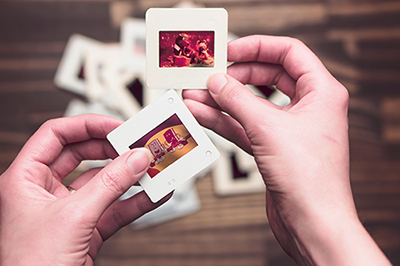Write references
In an academic text, references to other sources must be clearly stated. By referring to previous research, you show what information comes from other sources and what is your own contribution to the knowledge area.

Referring to past research gives recognition to other authors' research and ideas and creates credibility for your own work.
Proper use of references also shows that you are familiar with your area and can use information from several different places to reinforce your arguments, discuss a case, or draw your own conclusions.
Avoid cheating and plagiarism
Using someone else's material without providing references is called plagiarism and is a type of cheating. To avoid committing plagiarism, always provide a source as soon as you make use of other people's research results, ideas or arguments.
Use uniform references
It is important that your references are written in a way that allows the reader to find the original material. Use the same reference style for all references in the document and make sure they are formatted in the same way.
Choose a reference style
There are many different reference styles. Always check if there are any instructions regarding which style you should use. If not, find out which style is used in your subject area. Below you will find guides for some reference styles that are common at KTH.
APA
IEEE
Harvard
The Harvard style occurs in many variants that differ in the details. Often you can use any variant, but sometimes there are specific instructions.
Vancouver
Oxford
Using other people's pictures

Most images are copyrighted and may not be used without the permission of the copyright owner. If you want to use someone else's image, table, or figure you must have permission. By searching for images in, for example, Creative Commons or Google's advanced image search, you can filter your search to different licenses that specify how the image may be used. You still have to write a reference where you state where you downloaded the image and who is the copyright owner. Read more about copyright .
When you use figures (such as images, tables, diagrams) from another source in your own work, the following details should be provided.
If the figure is part of another source
-
Creator
-
Title and figure number if available (for example figure 1)
-
The source in which the figure is included and additional information about that source. What information you should include depends on the source type.
-
Page number
-
CC-license or information about permission to use the figure.
If the figure is freestanding
-
Creator
-
Title of the figure
-
Where the figure is available
-
Link to the figure
-
CC-license or information about permission to use the figure.
Usually you should follow the reference style you have chosen and use numbers or author and year respectively, for your citation in the text or in the figure caption. Complete information about the figure source should be included in the reference list . You can also provide all information about the source in the figure caption.
Exactly how the reference should be written depends on the reference style you are using. You will find examples of different styles in the guides above. You can also see some examples of how to write references to images with a CC-license on
Creative Commons pages
.
Example of how a citation might look for a Creative Commons image
Save time with a reference mangament software
Using a reference management software will save time and make it easier to get properly formatted references. On our page about reference management software, you can see which ones are available and how to choose.
Learn more about writing references


